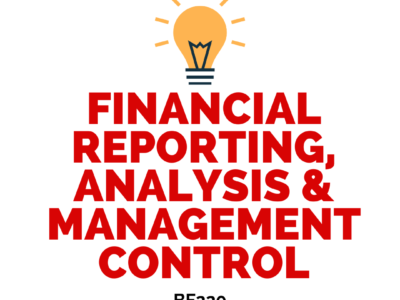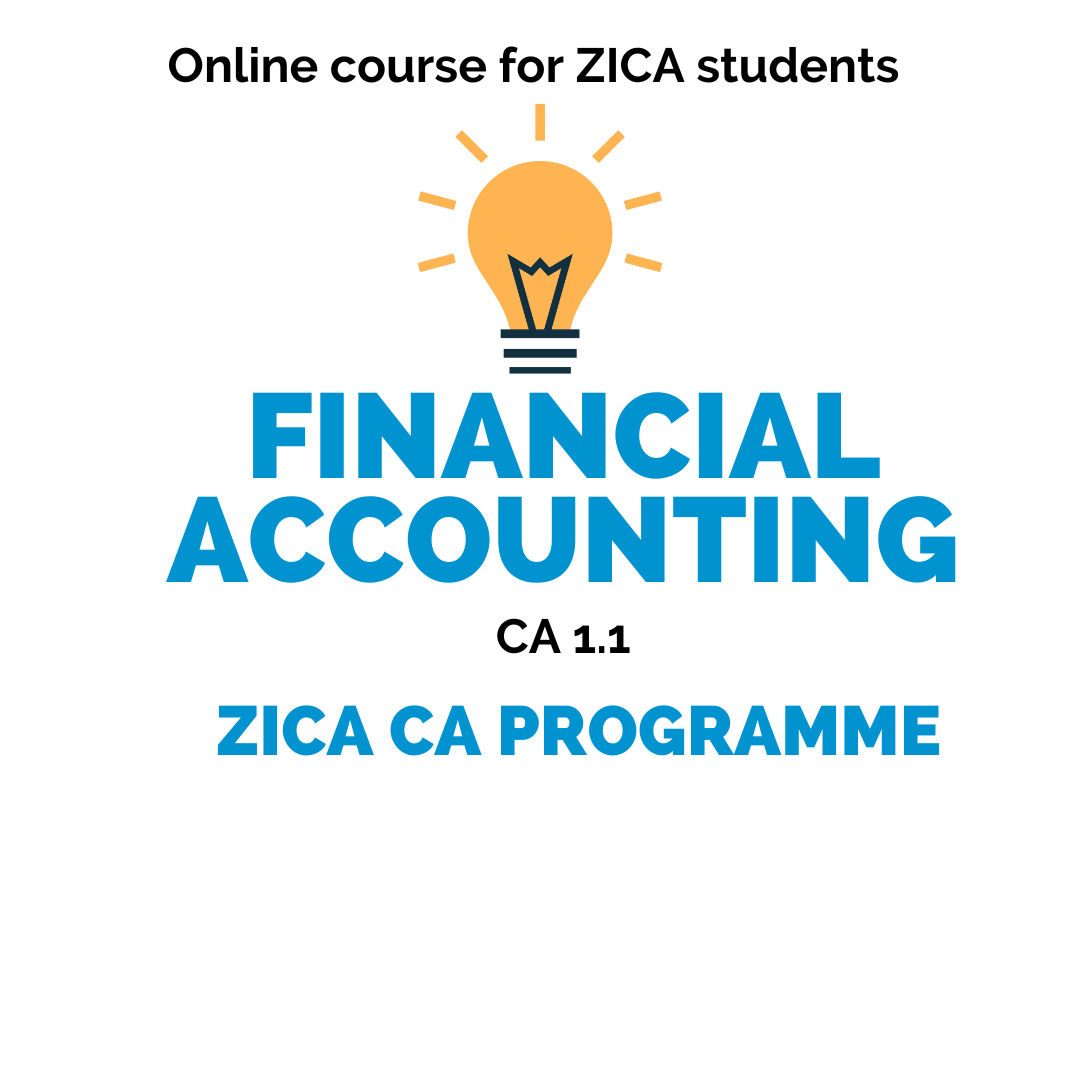CA1.1 Financial Accounting
CA1.1-Financial Accounting According to ZICA, 0n completion of this module, candidates will reach a competency sufficient to be able to: Explain the context and purpose of the preparation of accounting information for both public and private sector Record transactions and …
Overview
CA1.1-Financial Accounting
According to ZICA, 0n completion of this module, candidates will reach a competency sufficient to be able to:
- Explain the context and purpose of the preparation of accounting information for both public and private sector
- Record transactions and events and be proficient in the use of double entry to prepare and maintain financial records
- Make appropriate adjustments to financial records, including the identification and correction of accounting errors
- Prepare basic financial statements for sole traders, partnerships, companies and non-profit organisations.
| Syllabus topics | Weighting(%) | LO |
|---|---|---|
| Accounting information for both public and private sectors | 10 | 1, 2 and 3 |
| Recording transactions and events | 30 | 4 and 5 |
| Adjusting financial records and statements | 30 | 6 and 7 |
| Preparing financial statements | 30 | 8 |
Learning outcomes
- LO1: Explain the purpose of maintaining financial accounting records
- LO2: Define accounting concepts and financial records and identify appropriate sources of data
- LO2: Define accounting concepts and financial records and identify appropriate sources of data
- LO3: Outline accounting systems in both public and private sectors
- LO4: Apply double-entry bookkeeping techniques to record financial transactions and to maintain accounting records
- LO5: Record accounting transactions and prepare a Trial Balance
- LO6: Identify and correct omissions and errors in accounting records and prepare a revised Trial Balance
- LO7: Prepare an extended Trial Balance
- LO8: Draft a complete financial statements for sole traders, partnerships, limited companies and non-profit organisations
- Explain context and purpose of preparation of accounting information for both public and private sector: LO1, 2, 3
- Explain the purpose of financial accounting
- Identify the users of financial information
- Describe the conceptual framework for accounting information
- Identify the differences between public and private sector regulatory frameworks
- Recording transactions and events: LO4, 5
- Explain why it is important for an entity to maintain reliable financial records and prepare reliable financial statements
- Identify the sources of data and information for compiling financial records and financial statements
- Record and account for transactions and events, using double entry bookkeeping and books of prime entry, to support preparation of basic financial statements for sole traders, partnerships, limited companies and not-for-profit organisations in accordance with generally accepted accounting practice
- Prepare a Trial Balance
- Adjustments to accounting records and financial statements: LO6, 7
- Use of accounting systems to identify errors and discrepancies in accounting records and financial statements, including reconciliation procedures
- Perform bank reconciliations to agree cash balances
- Record correcting entries to accounting records for errors and omissions including stating their effect on the financial statements using suspense accounts and control accounts, control account reconciliations, and other techniques including those situations where there are incomplete financial records.
- Record and describe correcting entries and approved changes in a journal and in draft financial statements
- Prepare an extended trial balance to support financial statement compilation
- Compiling financial statements: LO8
- Explain the purpose, nature and relationships between the statements of profit or loss, changes in equity, financial position, and cash flows.
- Explain the purpose, nature and relationships between the statements used for public sector organisations
- Prepare financial statements and basic supporting notes including the income statement, statement of financial position and cash flow statement for sole traders, partnerships, limited companies and not for profit entities
Required knowledge – Accounting Standards The technical appendix details the depth of treatment of required knowledge and the progression of competence over the levels in the qualification.
Curriculum
Curriculum
- 1 Section
- 2 Lessons
- 20 Weeks
Expand all sectionsCollapse all sections
- Pre-course quizzes2







